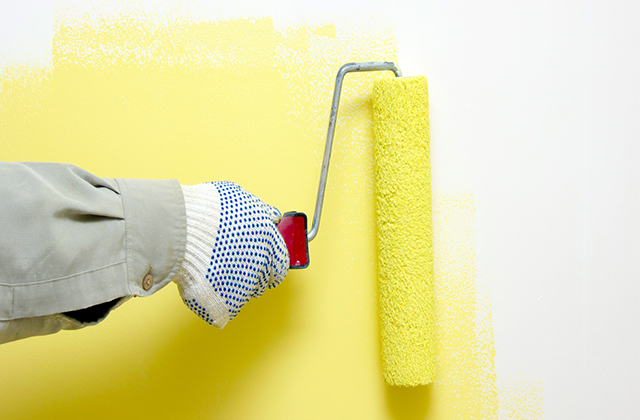There is little better than seeing simple materials create stunning results with easy techniques. Sponge effect on interior painting is one of these special ways to revive an interior wall to dramatic effect.
What You Need:
- A sponge (natural sponges work best)
- Paint roller, paint tray and paintbrush
- Rags
- A stepladder
- Painters’ tape
- Low gloss paint for the paint base
- Latex paint for sponge accents
- Latex glaze
- Extender
Method:
- Experiment on a small panel of hardboard before starting on your walls. This allows you to get a feel for the sponge and confirm your paint samples are the colours you want to buy.
- Place your sample board in the room you’ll be painting. You’ll be surprised how lighting changes the visual effect! Once you’ve confirmed your colour choice, and practiced creating the effect, you’re ready to start painting your walls!
- Prepare your room, the same as for any paint job (by protecting your trim with painters’ tape, protect your floor with drop sheets, applying a base coat etc.).
- Mix your paint with glaze and extender, according to the glaze manufacturer’s instructions. TIP: Low gloss eggshell finishes work well for base coats.
- Sponge your first paint/glaze mixture over your base coat. Dab the sponge in the paint, blot off most of it and lightly press the sponge against the wall. For a consistent effect, load the sponge with the same amount of paint, and apply it with the same side of sponge at the same pressure, throughout. Wash out your sponge when done.
- Use a paintbrush/small sponge to dab paint into the corners and along the edges of the wall.
- Once the first sponged colour is dry, apply the second. Repeat this step as many times as needed. TIP: Vary how much you apply — each colour could cover less wall area, for an increasingly subtle effect. Your final colour is simply an accent. Remember to complete each coat by repeating step 6!
- To add contrast, scour areas using water and a scouring pad. Do this as soon as the paint is dry to the touch. Putting some baking soda on the scourer helps remove paint that’s completely dry. This is a great time to rub away drips and blotches.
You can sponge more than one colour, following this rule of thumb: 1-2 colours create a bold, heavily contrasted finish, and more colours leave your walls with an increasingly subtle, cloudy effect.
Sponge effects on interior painting are beginner-friendly and carry a low risk of failure, because they’re so forgiving. If one part of the wall turns out too light, for example, all you’ll need to do is go back and sponge another layer of darker paint over it. And before you commit to a colour scheme, it pays to use a colour picker tool. You’ll be able to see how your favourite paint performs in the context of a room, ahead of time.


